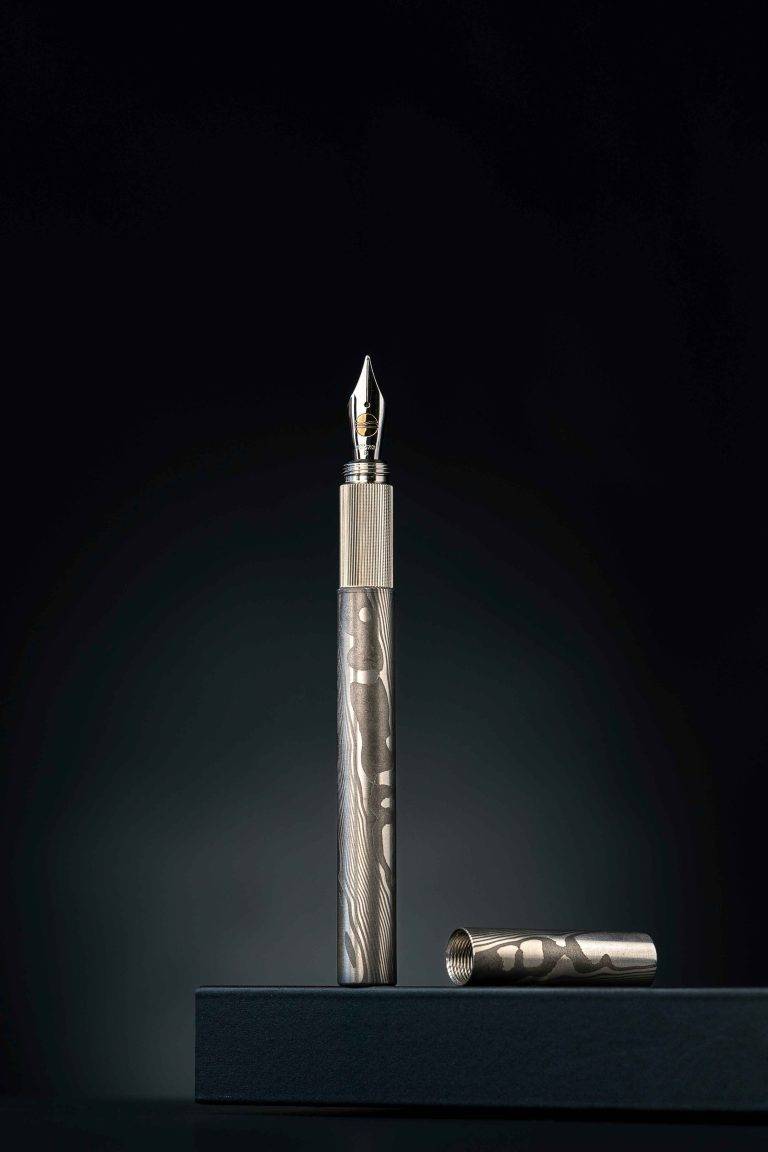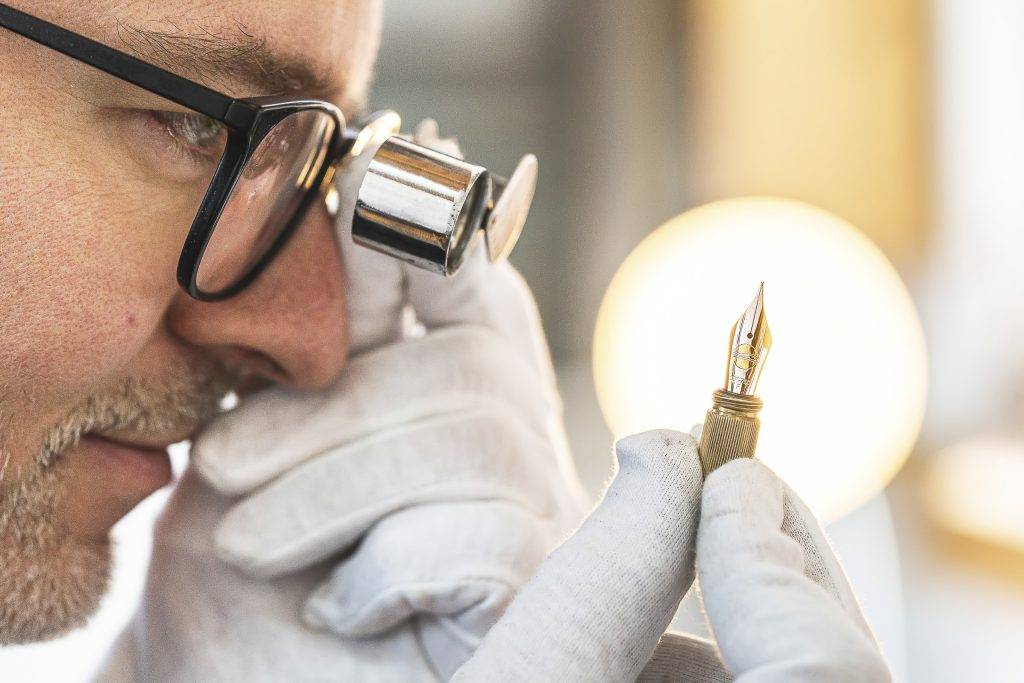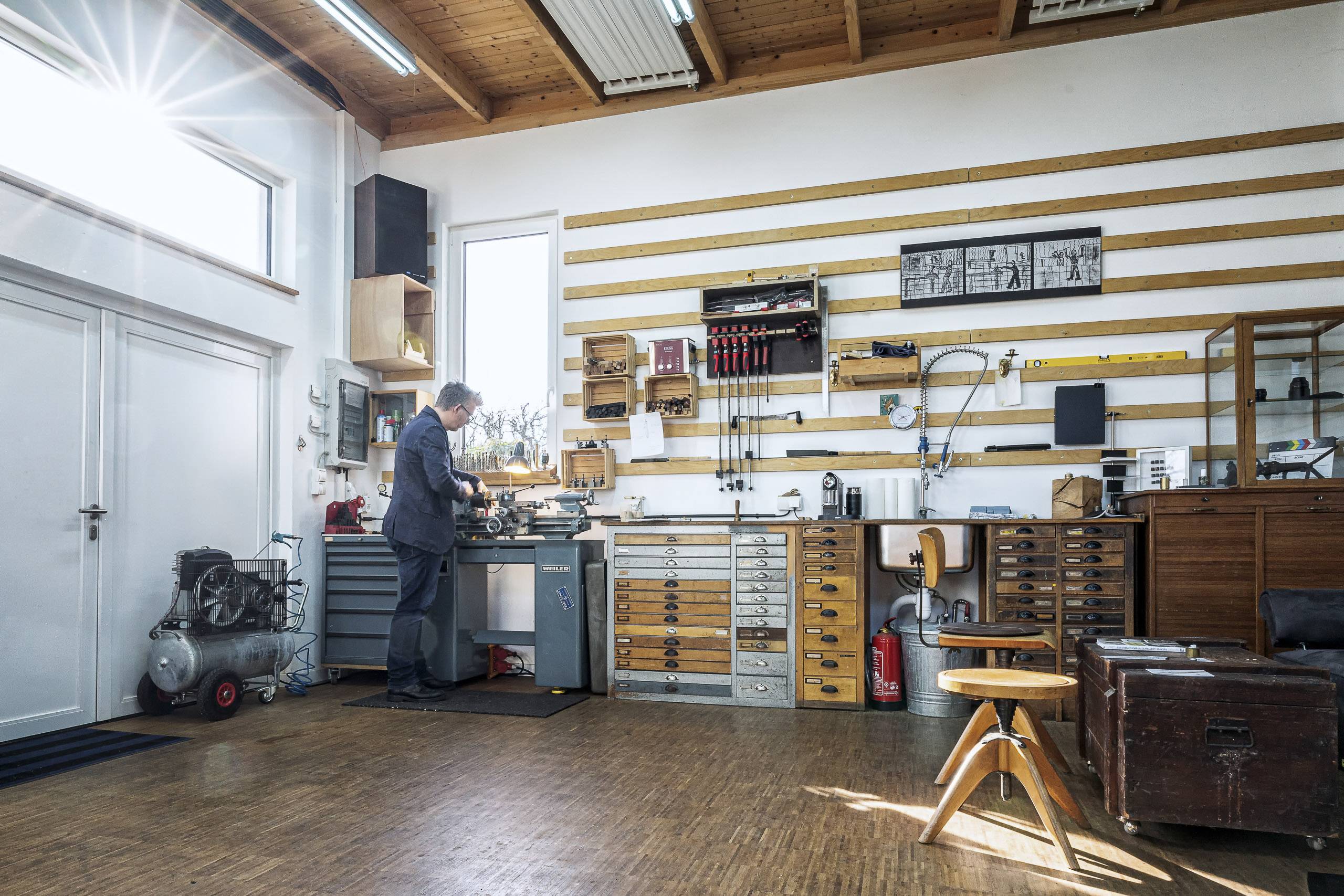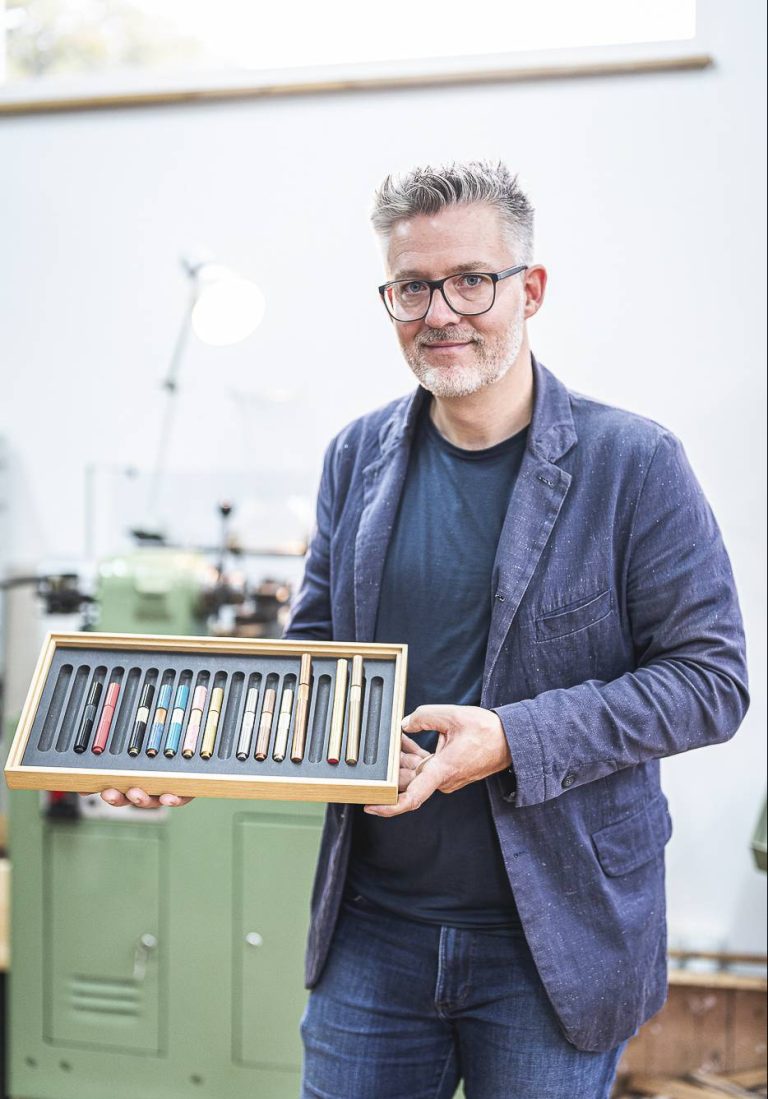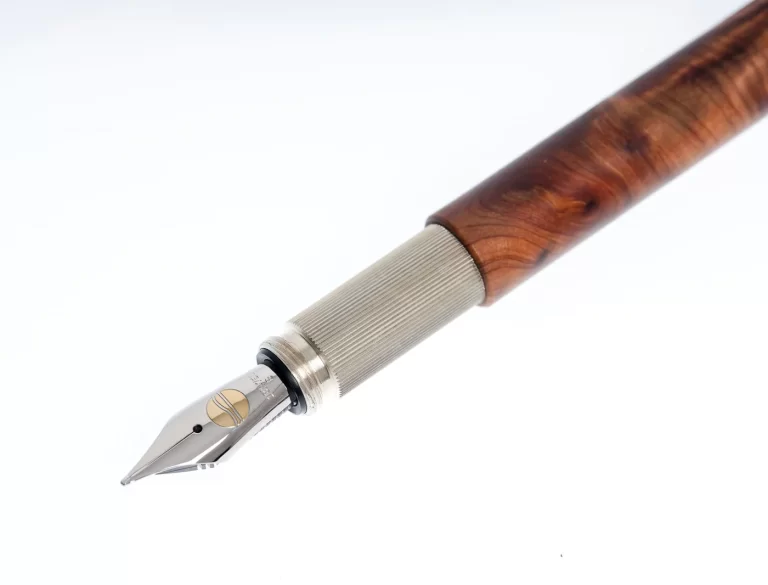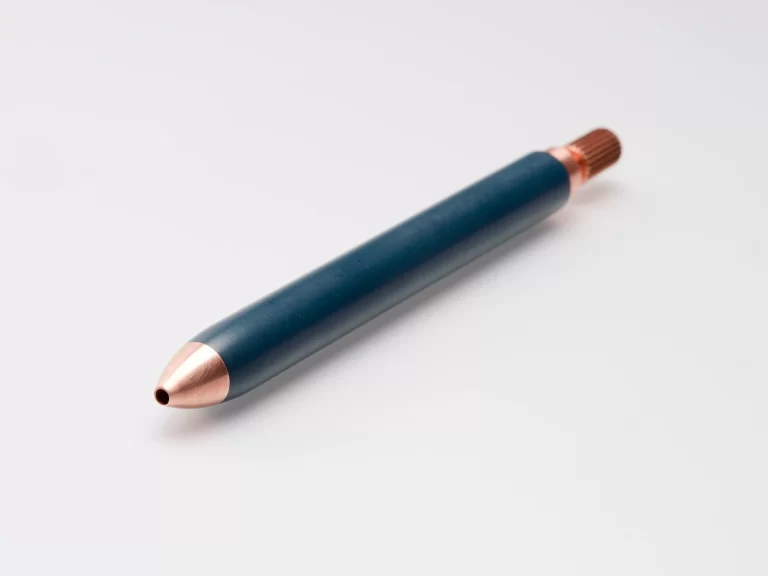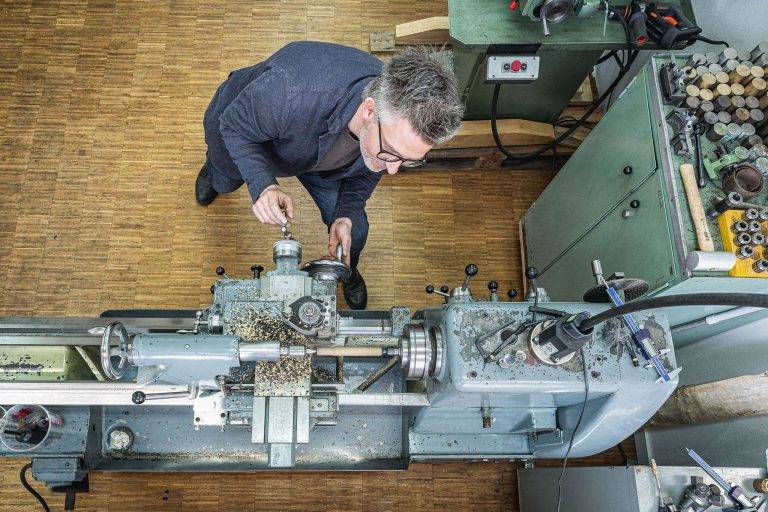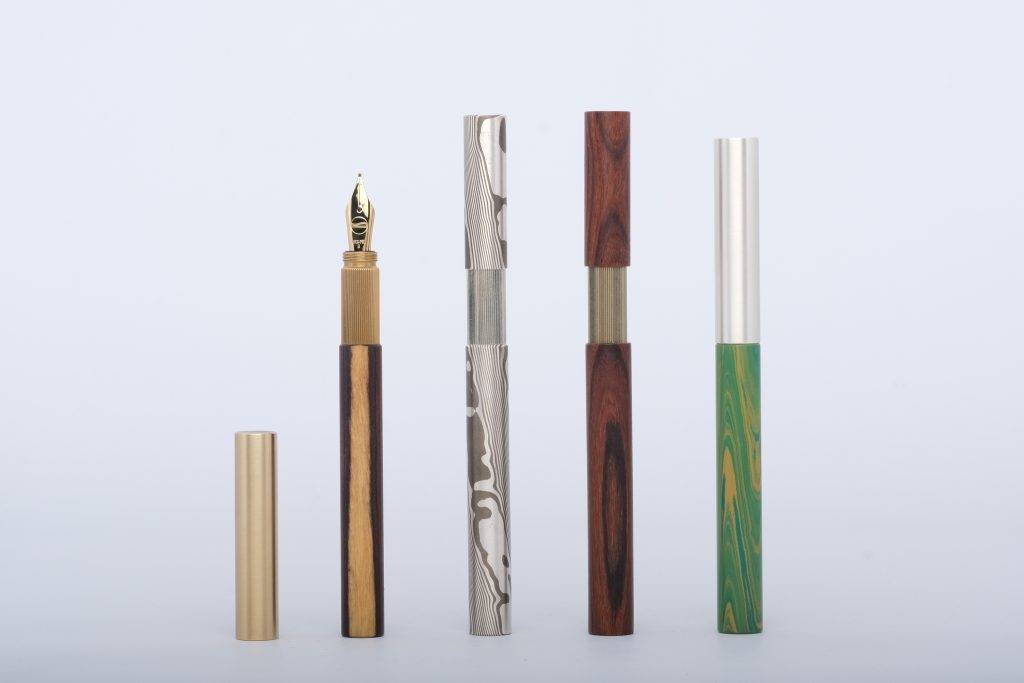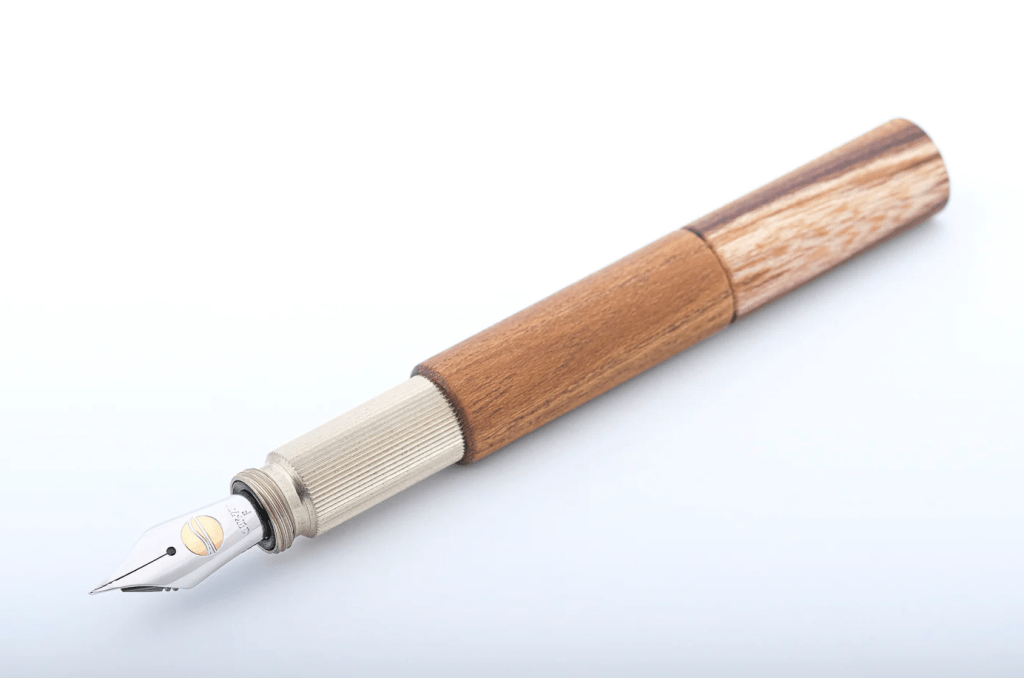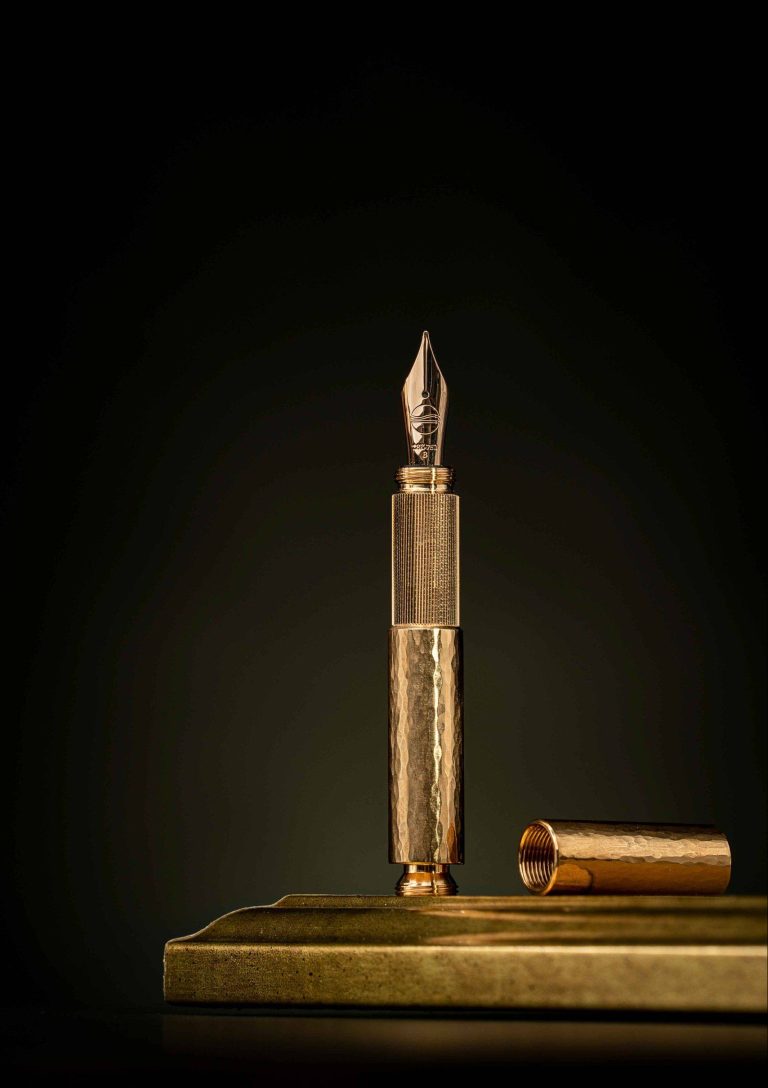Founded by Frank Pressentin and situated on the banks of the Elbe River in Hamburg, Germany, ELBWOOD – The Hanseatic Penmaker is a testament to Frank’s passion for small-scale, artisanal production. Every pen produced in this atelier is meticulously crafted by hand, emphasising that here, individual production isn’t just a luxury; it’s the standard.
The company’s collection ranges from exquisite fountain and ballpoint pens to captivating custom-made pieces, each a work of art that adheres to minimalist design principles and showcases exceptional craftsmanship. The result is a one-of-a-kind writing instrument of the highest quality that reflects the owner’s personality and the creator’s skill.
FOUR sits down with Frank to find out more about the company’s background and philosophy…
Can you share some background on ELBWOOD — The Hanseatic Penmaker? How and why did you establish the company?
I have always been creative and interested in making things by hand. My interest in physical creation started with photography when I was 13 years old. I was fascinated by analogue photography, with pictures I developed in my dark room. I spent so many nights in that dark room. There are common elements between making and using pens and photography. You need time, practice and an eye for design. You write with light in photography, and I wanted to reflect on the analogue experience of taking time to make things and instilling this into the analogue approach to writing by hand.
It was a long process between photography and now, about 30 years in between. Many of us lost the analogue approach with digital photography because we were now able to do things we could never do before [with computer software]. However, over the years, I realised something was missing because everything was easily available and could be completed quickly. I wanted to step back to the old values. These values might drive people to buy a pen they don’t need but want because it satisfies a physical expression of themselves. With pens, you can use writing to connect to yourself again.
My first experience with penmaking came after I started building a boat for my family – which is a crazy thing to do without experience. I found that if you’re willing to learn, dive into the internet, and listen to others from all over the world, you can easily learn how to do things. While building the boat, I really enjoyed the process of working with my hands again, and I started to think of what I would do next.
During this time, I learned that boat captains, historically and currently, write daily logbooks by hand, and I had this spark in my head – from logbooks to writing to writing instruments to making writing instruments using boat-making materials. I started by using recycled boat materials and components such as ebony wood and brass. My first pen was made out of the bronze of a boat propeller. Boat materials are excellent for penmaking. They are very hard [and durable] and water resistant, so there’s no rusting, but they are also very hard to work with. From there, I developed my own pens and forms and haven’t changed that approach.
Can you tell us about the origin of the company’s name…
The name comes from the Elbe River that runs through Hamburg. It’s a historically interesting river that flows through East and West Germany, and it plays an important role in the history of my city.
The Hanseatic part of the name comes from the Hanseatic cities that used to have values embedded into their trading; for example, a contract is based on a handshake, and people took pride in their word. They’re old values but ones that haven’t lost their worth — and I wanted to reflect that in my company.
How has ELBWOOD — The Hanseatic Penmaker evolved over time?
At first, it was a hobby, and I did it in my spare time before I started selling locally. A process that took me from being a hobbyist to a professional. The most significant professional step came when I took the store online, using social media and the website, and started communicating in English with high-quality video content to make the brand visible to the world. This only happened three years ago, but it created a major change.
Tell us more about your design style…
The form/style I developed is very, very reduced. It took me a long time to develop a form that is so reduced that you can use it as a stage for many different materials. Sometimes, penmakers use fancy materials, but they don’t look at the form itself, so the pen turns out somewhat awkward, boring to look at or, even worse, uncomfortable to use.
If you look at the penmaking industry in general, it’s not easy to make something unique, leading to the three basic forms I use today. With these basic forms coming from the background of natural elements like wood, brass, bronze and stainless steel, I ventured more into using precious materials like silver and gold.
These materials have a fascination of their own, and they feel interesting to work with and use. They give lots of value, weight and history to the pen. I evolved from readily available normal materials to high-class materials without ever leaving the reduced design behind.
When you make jewellery, pens or fashion, the urge for ornamental design often takes over; they put bits and pieces over everything… it becomes epic and extravagant at first sight. But Hanseatic design is about silent luxury. You yourself know what its worth is, and that’s what matters the most. It’s a new luxury you make for your own gratification and stays with you for a lifetime. This approach creates exclusivity.
If you think about it, at every airport, you can buy a Mont Blanc pen [that’s identical to others throughout the world]. It isn’t special being able to buy the same pen in multiple places like Italy and China. I’m looking at luxury from the side of reduction; it should be looked for, searched for, and shouldn’t be easy to find. It’s for you, not as a show-off status symbol. You want to be sure of where it comes from, who made it, and how long it took to make it.
Some of my clients wait 4-6 months for their pens; time and patience are the only ways to make a piece truly unique and appreciated. When we wait for something, we learn to appreciate and take care of it more. We give it more value.
What does the production process of the pens look like?
Each pen is handmade. I use very old precision lathes, which is a turning machine that makes it possible to create the threads for each component of the pen. But these machines need to be guided by hand so that you can feel the difference between each material and design. Whether you’re working with gold, silver or brass, you have to turn each with different timings to make them by hand. I make every pen, one after the other, by myself using these tools.
Materials have a personality and change over time. For example, with copper, the moment you touch it, it turns dark, and your hand leaves an imprint. It becomes very dark over time and begins to develop a pattern based on how you’ve used it. It tells the history of its use. Larger industries don’t like materials that show their age; I try to let the material I choose retain its characteristics.
I don’t design with 3D modelling on a computer, which is the modern way of designing. I put a piece of solid metal or wood in my lathe and use the tools to figure out a form for that material. That process is a mix between head and heart, and it’s slow and incremental. You create the form little by little. It’s kind of like the process you follow when creating a sculpture. Very seldom do I use a sketch or drawing; the pen comes from the sculpting.
I wouldn’t consider myself a designer – I think of myself as being something in between a craftsman, designer and artist. Artists are free and come from a very philosophical approach. A designer doesn’t need to be a good craftsman to be successful, and the craftsman doesn’t have to be a designer. My approach includes all three elements to create something that intrigues me as I create.
Do you do any collaborations with other artists, companies or designers?
There’s something I’m working on at the moment which is quite interesting. I started working with other creatives, such as jewellery artists and silversmiths, to create new and interesting forms. Their crafts are very different from mine, and I’m interested in what we could do together. For example, making pens from sand casting out of silver or melted cast metal with unique stones… or creating enamel designs out of glass. This opens a door into the fascinating world of arts and crafts and showcases it on a writing instrument.
What does the future hold for ELBWOOD — The Hanseatic Penmaker?
In a business, there’s always a push for growth, to scale and produce faster and more. I didn’t want to go that way. Large-scale production needs more people and machines, and eventually, you come to a time where it isn’t special anymore. With my approach, there is a limited amount of material and manpower. I’ve made this my strength over the years.
With success, you have different possibilities; I can either scale up by accepting it’s not me making it anymore or include artists like the ones I’ve been working with and leave space for them to do it. I think I would rather go with the artists because there is the fear of losing uniqueness. I would lose something of my personal approach by just automating and scaling up. I want to keep this freedom for myself. I think my biggest fear of scaling up would be testing things to death, which eventually makes it more uniform but also removes this history in use.
To find out more about ELBWOOD – The Hanseatic Penmaker, visit the links below…
ELBWOOD – The Hanseatic Penmaker
Sonnenweg 60
22045 Hamburg
Germany
Web: elbwood.de
Tel: +49 (0) 173 808 99 42
Email: info@elbwood.de
Instagram: @elbwood
